
Filter News
Area of Research
- Advanced Manufacturing (2)
- Biological Systems (1)
- Biology and Environment (1)
- Computational Engineering (1)
- Computer Science (5)
- Energy Science (16)
- Fusion Energy (4)
- Materials (20)
- National Security (3)
- Neutron Science (23)
- Nuclear Science and Technology (9)
- Quantum information Science (3)
- Supercomputing (10)
News Topics
- (-) Bioenergy (9)
- (-) Grid (5)
- (-) Machine Learning (5)
- (-) Mercury (1)
- (-) Nanotechnology (6)
- (-) Neutron Science (21)
- (-) Nuclear Energy (17)
- (-) Quantum Science (10)
- 3-D Printing/Advanced Manufacturing (15)
- Advanced Reactors (7)
- Artificial Intelligence (12)
- Big Data (7)
- Biomedical (5)
- Biotechnology (1)
- Clean Water (5)
- Composites (2)
- Computer Science (35)
- Cybersecurity (5)
- Energy Storage (8)
- Environment (19)
- Exascale Computing (2)
- Frontier (2)
- Fusion (5)
- Isotopes (1)
- Materials Science (20)
- Microscopy (5)
- Molten Salt (1)
- Physics (6)
- Polymers (2)
- Security (2)
- Space Exploration (4)
- Summit (9)
- Transportation (12)
Media Contacts

An ORNL-led team's observation of certain crystalline ice phases challenges accepted theories about super-cooled water and non-crystalline ice. Their findings, reported in the journal Nature, will also lead to better understanding of ice and its various phases found on other planets, moons and elsewhere in space.
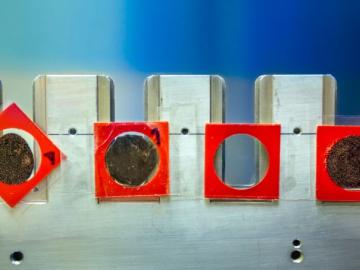
Tempering, the heating process that gives chocolate its appealing sheen and creamy texture, is a crucial part of crafting quality chocolate. But, at the molecular level, it gets a little tricky, and when done incorrectly, can render entire batches of chocolate gritty and unappetizing.
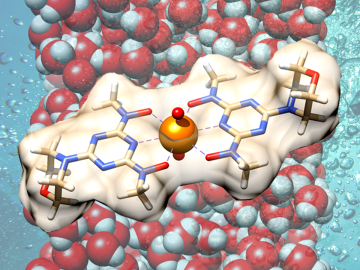
Scientists have demonstrated a new bio-inspired material for an eco-friendly and cost-effective approach to recovering uranium from seawater.

OAK RIDGE, Tenn., May 14, 2019—Advanced Research Systems, Inc., has licensed a technology designed to automatically refill liquid helium used in laboratory equipment for low-temperature scientific experiments, which will reduce downtime, recover more helium and increase overall efficiency.
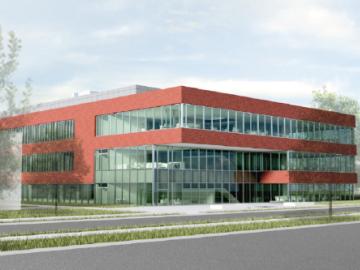
OAK RIDGE, Tenn., May 7, 2019—Energy Secretary Rick Perry, Congressman Chuck Fleischmann and lab officials today broke ground on a multipurpose research facility that will provide state-of-the-art laboratory space
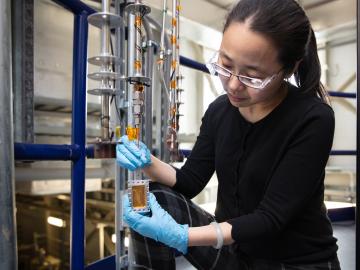
Researchers at the Department of Energy’s Oak Ridge National Laboratory, Pacific Northwest National Laboratory and Washington State University teamed up to investigate the complex dynamics of low-water liquids that challenge nuclear waste processing at federal cleanup sites.
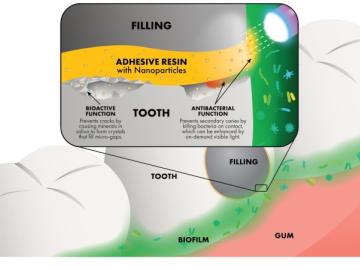
To help address the issue of dental restoration, Oak Ridge National Laboratory researchers are using neutron scattering to study how nanoparticles with antibacterial properties can be added to adhesive resins, which are used by dentists to strengthen the bond between a tooth and its polymer composite filling.

In a step toward advancing small modular nuclear reactor designs, scientists at Oak Ridge National Laboratory have run reactor simulations on ORNL supercomputer Summit with greater-than-expected computational efficiency.

Scientists at Oak Ridge National Laboratory have developed a low-cost, printed, flexible sensor that can wrap around power cables to precisely monitor electrical loads from household appliances to support grid operations.
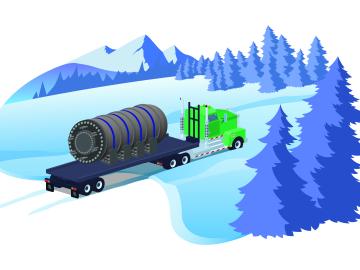
Oak Ridge National Laboratory scientists are evaluating paths for licensing remotely operated microreactors, which could provide clean energy sources to hard-to-reach communities, such as isolated areas in Alaska.


